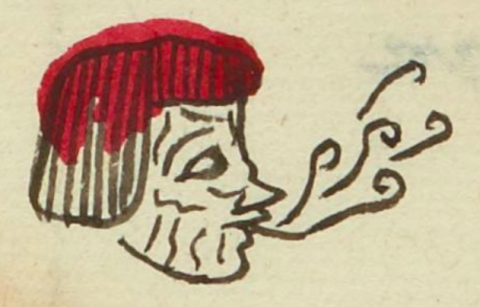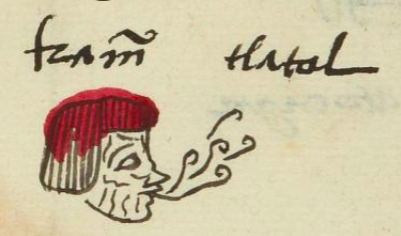Tlatol (MH533v)
This black-line drawing of the simplex glyph for the personal name Tlatol (or Tlahtol, with the glottal stop, “Word,” attested here as a man’s name) shows speech scrolls emerging from the mouth of the tribute payer. These are five simple lines with curls at the right ends. The top one, however, does not have a full curl.
Stephanie Wood
Speech scrolls that come out of a human mouth (also, for instance, from an eagle's beak) can represent a range of vocabulary, including: tlatolli (word), itoa (to speak), tzatzi (to announce), motenehua (aforementioned), nahuatl (language, or a pleasant sound), chalani (to speak a lot), and cuica (to sing). This list is not exhaustive.
It is interesting that "word" is represented as oral rather than alphabetic or hieroglyphic. Oral communication was paramount in Nahua culture.
Stephanie Wood
framco tlatol
Francisco Tlatol (or Tlahtol, if we include the glottal stop)
Stephanie Wood
1560
Stephanie Wood
words, palabras, speak, hablar, speech

tlatol(li), word statement, https://nahuatl.wired-humanities.org/content/tlatolli
La Palabra
Stephanie Wood
Matrícula de Huexotzinco, folio 533v, World Digital Library. https://www.loc.gov/resource/gdcwdl.wdl_15282/?sp=186&st=image
This manuscript is hosted by the Library of Congress and the World Digital Library; used here with the Creative Commons, “Attribution-NonCommercial-ShareAlike 3.0 License” (CC-BY-NC-SAq 3.0).









